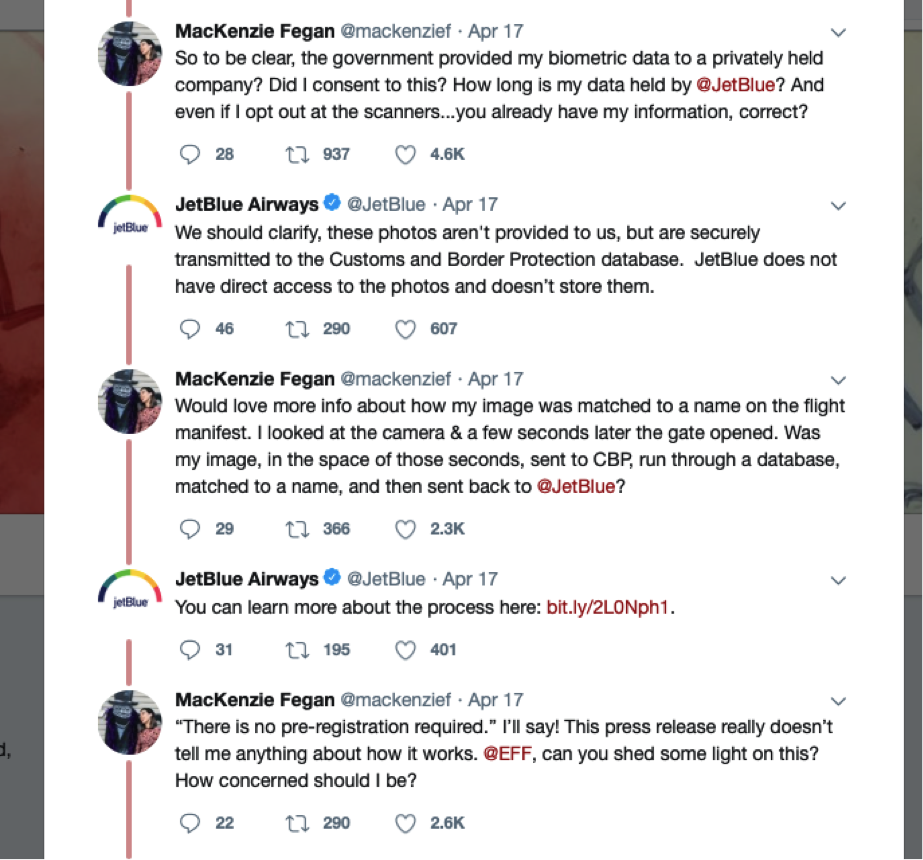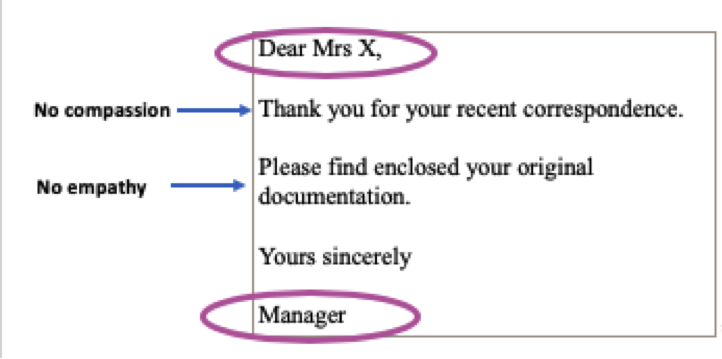Tiffany: The Future Email Subscriber
Email has undergone a lot of changes over the last few years - but it’s likely that the changes we’ve already weathered have simply been laying the foundations for what’s to come. For email marketing, these are interesting times.
The most important people in any consideration about the future are, of course, the consumers on the other side of the screen. Who is the future email subscriber, and how can we best serve them? Here’s my take on the things we should be thinking about in order to build, maintain, and enhance relationships with email subscribers in the future.
The three big factors
Email is a vibrant and productive channel, which gets results. 73% of consumers state that email is their preferred marketing channel, and as we all know email consistently provides the greatest ROI. With this kind of power, reach and popularity, it’s unsurprising that the channel should be in a state of constant flux. There are three big factors that I believe will be the most crucial to pay attention to if we’re going to be prepared for the future email subscriber, and in this blog, I’m viewing these tools as a subscriber:
- AI
- Predictive Automation
- Voice Technology
Let’s take a closer look at what these are and how they’re affecting the recipient:
AI
AI - Artificial Intelligence - is in the press a lot lately. Some hail it as the saviour of society, while others take a more dystopian view. I personally believe that AI has huge potential for email marketing and have written about it previously on the OI blog, so long as we use it in the right way.
As I’d written about previously, AI has already had some success in the world of email marketing. AI is not just analytical - it can also be creative.
AI tools are tireless, and they are capable of constant learning. It is able to capitalise on its new knowledge swiftly, while still working within the parameters of the brand voice and brand values. Constantly gaining experience, constantly testing, improving, and rejecting new formulas, and not subject to human issues like fatigue or ‘off days’, creative AIs clearly have enormous potential. Relevance, tone consistency, and engagement are three of the key challenges faced by any email marketer. And the evidence all points to AI being able to hit each of these buttons with ease.
However, it is important to use AI in the right ways. As with any machine tool, AIs will do exactly what you tell them to. They lack the nuanced understanding of what’s unsaid that a human worker brings to the table. So, they need to be programmed very carefully. For example, AIs have the potential to make content hyper-relevant and intensely personalised to the individual subscriber. This is a good thing…until it goes too far. An email every hour pestering you to pay attention to the sender is intrusive and stalkerish - but unless you specifically tell your AI where to draw the line, it will remain blissfully unaware of how creepy it’s being.
Furthermore, there are lots of consent and transparency issues surrounding AI. AIs rely upon data to learn and improve their methods, but this data must be obtained ethically. An example of this is in the below twitter exchange, a customer of JetBlue airways weren’t overjoyed when the company started using facial recognition technology without any consent:


New technology 'forced upon people' without a choice, any information or an obvious benefit causes friction. Using modern technology without the awareness about where the data is coming from or where it is being stored is a company-wide issue. It's an area that everyone in the organization needs to understand.
While biometric data can have massive value - using fingerprints and facial recognition to unlock phones, for example - people are very uncomfortable when a machine ‘recognises’ them without them explicitly providing their biometric data. How does the system know what their face looks like? Where is the data stored? How are the brands using it accessing it? It all raises concerns.
So, when using any kind of intelligent software, it is vital that subscribers remain in total control of their data. And as email marketers we need to keep this very much in mind.
Predictive Automation
Much of marketing is about staying ahead of the curve. We, as Marketers need to establish real intent, firmly and conclusively, if they’re to remain relevant to their customers.
Using predictive automation enhanced with machine learning, we can tap into genuine intent across a number of touchpoints. Social media, search engines, engagements - everything. For example, when someone types something into a search engine, they are demonstrating intent. Predictive automation logs that intent, combines it with others across a variety of channels, and uses this data to predict the trajectory of this customer’s journey with astonishing accuracy. It can then release certain types of content according to certain triggers. To use a very basic example, purchasing a product from many websites automatically generates an email acknowledging the purchase, perhaps with a receipt.
Predictive automations can learn the kinds of tactics, content, and behaviours which will help the customer along their path to purchase, and those which will hinder them. As such, automations are able to provide interactions which are relevant and have value to the individual customer and avoid those which will annoy them. The modern customer expects value added personalisation and assistance, and predictive automation gives us an unprecedented ability to provide just that.
There are a few things to consider from a subscribers perspective when using automation. For a start, it’s tempting to sit back and let the predictive automation do its stuff. However, without the human input, even the most sophisticated marketing automation is useless. Email automations need to be fed creative, high-quality content and they need to be tied to a wider strategy. What’s more, human marketers must regularly review the system to check that it’s learning the right things and behaving in the right manner. Automations are only as good as the humans programming, feeding, and checking them. In real-life customer experience, Hannah had to contact a banking organisation to close her bereaved Father’s bank account. The bank asked for a death certificate to be posted to them. A letter was sent from the bank to Hannah in reply, which also contained the death certificate…what tone do you think that letter should take in this scenario?
What would be the human response, in real-life if you were handed this information? When I’ve presented this question to an audience, empathy is the top answer. Below is the letter that was sent:

When I presented this back to the bank that Hannah had experienced this with, they were shocked and stated that it was an automated letter that hadn’t received a review in a long time.
Needless to say, the lack of humanity was horribly evident in this situation, and far from appropriate.
As with AI, it’s always important to ensure that predictive automation is used responsibly. People don’t want to feel like computers know too much about them, and it’s important that they always maintain control of their data. Predictive automation puts a lot of power at our disposal. We must not overuse or abuse the information and tools it gives us.
Voice Technology
Voice technology opens up huge potential for email marketers and I’ve written about the opportunities here. In summary, voice technology enables us to reach previously neglected audiences - those with visual impairments, for example. It also widens the scope for engagement, enabling audiences to ‘read’ their emails even with their hands full or away from their screens. If used correctly, voice technology could revolutionise email.
The US and China are currently leading the way with voice-activated speaker technology. Europe is a little more wary, with privacy concerns inspiring caution. Worries about Alexa ‘listening in’ to conversations and feeding data back to Amazon are often raised in any Alexa-owning home. However, it’s undoubtable that voice technology will make advances here in the very near future.
An increase in emails being ‘read’ by smart speakers must change the way we construct email content. Currently, Alexa and Siri read text in straight HTML format. They do not emphasise italics or bolds, they do not shout capitals, and they simply intone things like ‘Smiling emoji’ for emoticons. The impact of graphical features, animations, images and so on will be lost with this. So, it will become important to find ways of emailing which make the best of both the visual and the audible format - without overly relying upon the impact of either one or the other.
Making emails work in audible format will become easier as the technology develops. However, again, it is very important not to use this technology irresponsibly. People are already wary about the intrusive nature of smart devices. The future email subscriber needs to be entirely in control of their data and the content they consume. For smart speakers, this raises issues around privacy. Nobody wants their dinner party interrupted with an incoming email, and nobody wants sensitive emails overheard (or accessed) by other parties. How can we ensure that the subscriber intended is the only person able to access emails via a smart speaker? And how can we ensure that we’re doing everything we can to guarantee privacy over the Internet of Things? This is an interesting discussion point for us all.
Consumer control is key
So, developments in AI, automation, and the Internet of Things will give us unprecedented powers of personalisation and prediction, as well as enabling us to reach subscribers in ways never possible before.
This will lead to an escalation of our current need for personalisation. The future email subscriber will expect their content to be hyper-relevant to them, and won’t bother with anything that’s not directly adding value to their experience. We’ll have the tools to make this happen - the tricky part will be balancing the need for personalisation and relevance with the equally important need for privacy and data control. Companies such as Apple, are trying to stand out with their approach to privacy on their devices with their new sign in with Apple feature that creates a unique email address at the user’s request.
And that’s not to say when a recipient is reading our email, that we have their undivided attention, because the consumer is becoming increasingly distracted. So much so, that in China they have implemented For example, phone and no phone pedestrian lanes.

Just because we can get into the lives and homes of people in ways never before possible does not mean that we should. Future email marketers must be careful to treat subscribers like humans and to respect the boundaries of privacy and consent. You would not barge into someone else’s home uninvited - maintain the same kind of courtesy when marketing. Subscribers must at all times retain control of their data. Consent, transparency, and human checks and balances are key for moderating the powers of this new technology with basic human respect. The key will be in defining the value that your email marketing activity provides its subscribers.

 How to resolve AdBlock issue?
How to resolve AdBlock issue? 
 Jenna Tiffany is Founder & Strategy Director at Let'sTalk Strategy providing strategic consultancy services across the digital marketing mix. Jenna is a Chartered Marketer and elected Fellow of the IDM with over ten years’ marketing experience across both B2B and B2C. Jenna has consulted with brands such as Shell, Hilton and World Duty Free to name a few on digital and email marketing strategy.
Jenna Tiffany is Founder & Strategy Director at Let'sTalk Strategy providing strategic consultancy services across the digital marketing mix. Jenna is a Chartered Marketer and elected Fellow of the IDM with over ten years’ marketing experience across both B2B and B2C. Jenna has consulted with brands such as Shell, Hilton and World Duty Free to name a few on digital and email marketing strategy.